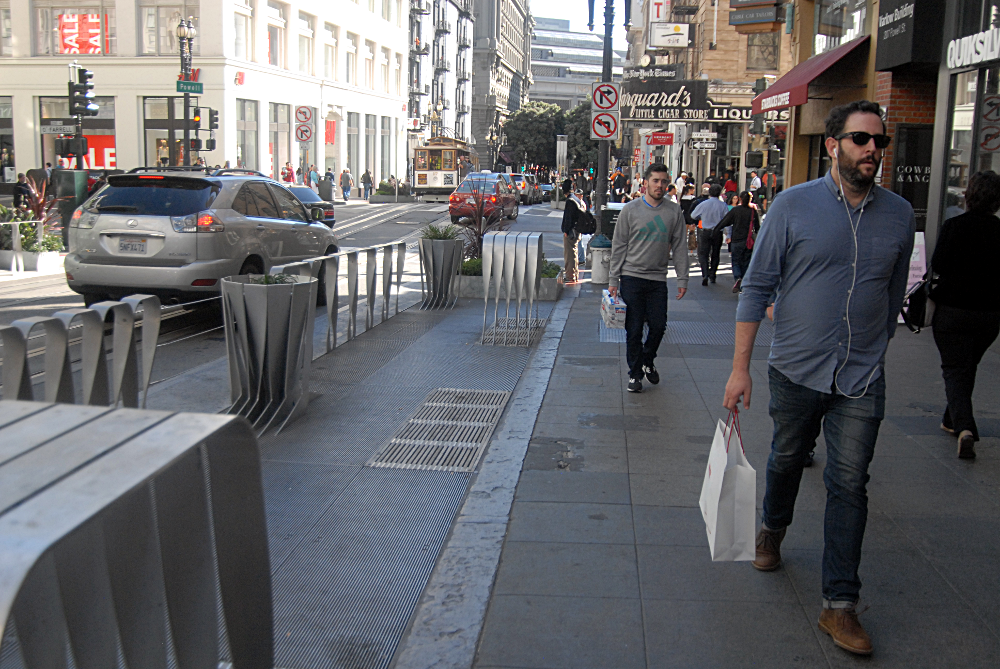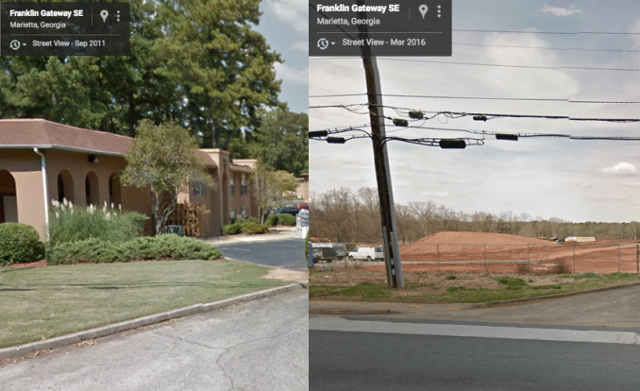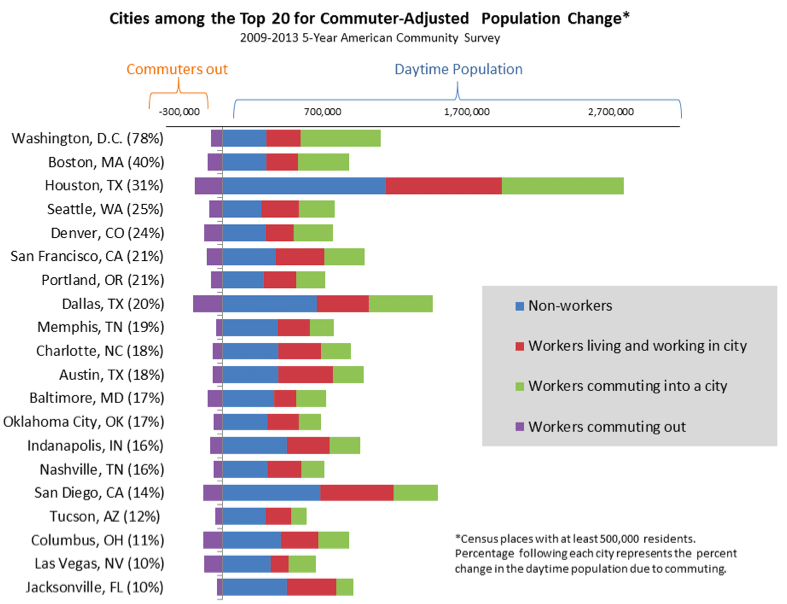What City Observatory did this week
1. The national party platforms on transit. In November, most Americans will be choosing between a party whose platform offers the barest details and seemingly little understanding of urban transportation and a party whose platform is “more or less openly hostile” to it.
2. Marietta’s victory over affordable housing. Last year we wrote about this Atlanta suburb’s plan to banish the residents of 1,300 intact, market-rate, lower-rent apartments by spending $65 million to acquire the buildings and demolish them. The complexes had a 25 percent poverty rate and were inhabited by 80 percent people of color; as Google Street View shows, they’re now gone. The national media have remained silent.
3. The new sucking sound: offshoring taxes from intellectual property. Manufacturing jobs may be trickling back into the United States, but domestic companies built on ideas are happily keeping their profits outside the nation that nurtures them. That’s due to our international tax regime that rewards fictions like Apple’s assigning 92 percent of its profit to offshore work.
4. Rail projects need reality-based traffic projections too. Freeway partisans may be the worst offenders in claiming that ever-rising traffic requires unending expansion, but a federal judge ruled this week that Maryland’s Purple Line light rail also needs to revisit outdated ridership trends before moving ahead with its multibillion-dollar project in suburban DC.
The week’s must reads
1. What causes displacement in growing cities? The Sightline Institute describes the housing market in cities like Seattle as “a giant game of musical chairs”: “Even if the game-makers preserve certain chairs for certain people (‘reserved for veterans’ or ‘special-needs players only’) or stem the addition of expensive new chairs to the game (‘no McMansion chairs!’) or give money to some players to help them buy chairs (‘Section 8’), as long as people outnumber homes, the game will still keep knocking players out. And it will always, always, always knock out the players with the least financial resources.”
2. Upzone, but don’t give it away for free. Hong Kong has a lesson for U.S. cities, says USC’s Richard Green: it sells newly developable land at auction and uses its proceeds for housing subsidies that help half the population afford to live in the city. Even in the face of tax limits like Prop 13, he says, cities like Los Angeles could use a similar system to sell air rights and invest the money in housing.
3. How local land use decisions are biased against non-residents. Who loses when cities block new housing? Most of all it’s people who work but don’t live there. Emily Badger uses a decision to block 4,000 new homes in Brisbane, California, just outside San Francisco, as a case for making more land-use decisions at the regional, state or national levels — as Japan has done, and as California Gov. Jerry Brown has been pushing to do. She pulls data showing this is a bigger issue in some cities than others:
Image: Washington Post.
4. De Blasio’s housing plan stumbles. Months after agreeing in theory to a plan that let developments be larger as long as they included some below-market-rate units, New York City council members are turning against Mayor Bill de Blasio at the project-by-project level. “Many of us don’t want to just see rentals or just housing being built,” zoning subcommittee chair Donovan Richards tells Politico. “There is a need for parking, etc.”
New knowledge
1. Cities can survive auto congestion if they are dense enough. “On average, more jobs can be reached in a given amount of time via the congested streets of San Francisco than on the fast moving freeways and boulevards in the fringes of the region,” write Brian Taylor, Taner Osman, Trevor Thomas and Andrew Mondschein in a Caltrans-backed, peer-reviewed critique of the Texas Transportation Institute’s “cost of congestion” measurements. It’s not that congestion is good or shouldn’t be mitigated, they find, but rather that access to destinations is generally more important than speed.

San Francisco: neither immobilized nor unproductive. Photo: Michael Andersen.
2. Tech growth boosts low-wage workers, too. Many cities want a local high-tech industry. But when such efforts succeed, do residents with different skills benefit? For a new study in Annals of the American Association of Geographers, Neil Lee and Andres Rodriguez-Pose of the London School of Economics examine the spillover effects of high tech job growth on the low and moderate income population of a metropolitan area. Data on 295 metro areas for the period 2005 through 2011 (a time dominated by the Great Recession) suggests that tech jobs had a positive impact on the employment and earning prospects of low wage workers, but weren’t enough by themselves to have a major impact on poverty rates.
3. Improving communication about housing shortages. Views and perspectives of single-family homeowners are “dominant” in media coverage of Seattle housing issues, according to a 14-page “media audit” by the Sightline Institute, leading to perceptions that they are “a stand-in for ‘public’ or ‘voters’ and given special deference.” Sightline offers suggestions for housing advocates to better frame the situation — for example, by avoiding the words “supply and demand.”
The Week Observed is City Observatory’s weekly newsletter. Every Friday, we give you a quick review of the most important articles, blog posts, and scholarly research on American cities.
Our goal is to help you keep up with—and participate in—the ongoing debate about how to create prosperous, equitable, and livable cities, without having to wade through the hundreds of thousands of words produced on the subject every week by yourself.
If you have ideas for making The Week Observed better, we’d love to hear them! Let us know at jcortright@cityobservatory.org or on Twitter at @cityobs.


